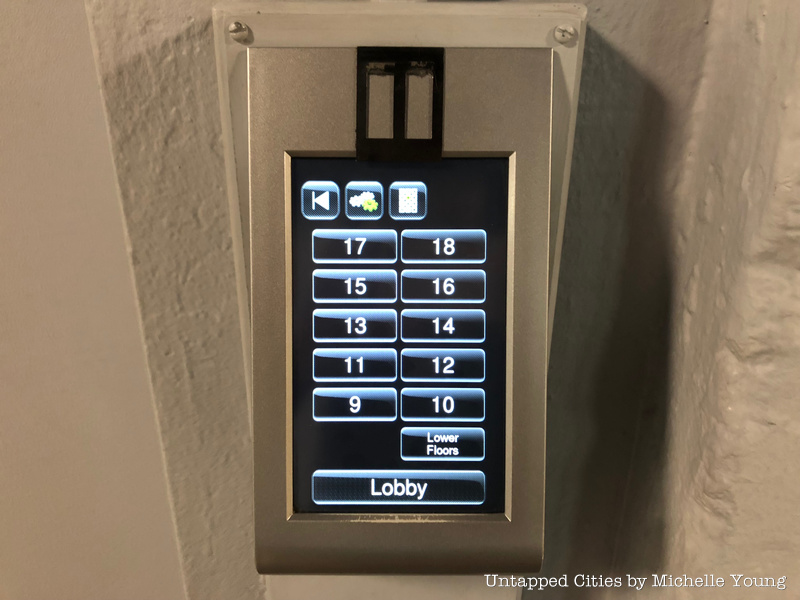
There are two kinds of lines in New York: the line for the latest must-have item (cronuts, tickets to Book of Mormon, the latest iPhone) and dreaded transit lines (trains, airport security, elevators). In fact, an IBM study indicated that New York office workers spent a total of 22.5 years in 2010 waiting for–or stuck in–an elevator. If time is money–and it usually is–then elevator travel in large buildings can be expensive. “Smart” elevators, such as the Schindler Elevator Company’s Miconic 10, clusters passengers based on similar destinations to cut travel time by an average of 50 percent.
The passengers first enter in their desired floor as they approach the elevators. The keypad sorts them into groups of similar destinations and assigns specific elevators to each passenger. So passengers going to floors 26, 28 and 32 would be assigned one elevator, while passengers who keyed in floors 50, 54 and 55 would take another. In cases when every second is necessary, the Schindler elevators can also detect employees via their ID badges.
On the way down, full elevators skip floors to minimize wasted stops. The Miconic monitors each car’s current weight, and ceases to make stops once the weight passes a certain limit. The system also tracks traffic patterns and remembers the most frequently called floors. The decrease in trips preserves equipment longer as well.
“It’s like taking a limousine rather than a bus,” Schindler president of North American Operations Scott Stadelman said in 2006.
While the smart elevator is designed to be intuitive, smart technology always takes some adjustment. In the Miconic 10, there’s no need for buttons, which may feel counterintuitive for first-time users.
As of 2006, the Miconic had been installed in over 200 New York buildings, including Hearst Tower and the New York Marriott Marquis Hotel. With the average elevator wait cut from three minutes to just under a minute, it looks like New Yorkers have freed a few years of their schedule–so they can wait on line for more worthwhile things, like Umami Burger.
Read more from our Cities 101 series about how stuff works in the city. Get in touch with the author @catku.





